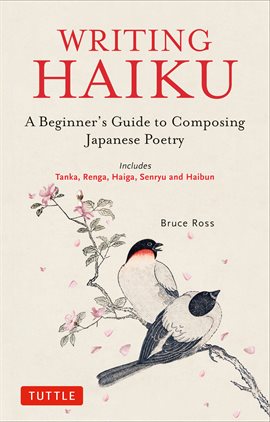Most of us learned something about haiku in school. It’s the tiny poem that packs a big punch. “Many think haiku is strictly a 5-7-5 syllable pattern ending in a 17-syllable poem, and it can be that, but more important is the image. A haiku is the fewest words, one to three lines, that appeal to the senses and focus on nature.” This explanation of the form comes from Missouri Poet Laureate, Maryfrances Wagner, who in conjunction with the Missouri Arts Council, is spearheading the Missouri Haiku Project. “I’m inviting all Missourians to create haiku poems that reflect nature in Missouri and share them, read them or turn them into art,” Wagner says.
The project runs through May 23, with events occurring throughout the state, including “Tea and Haiku” in the Columbia Public Library Friends Room, Tuesday, April 11 at 7-8 p.m. Haiku enthusiast Christine Boyle will be your guide for a fun and relaxed hour of writing and sharing short poems over tea. A selection of your poetry will be displayed in the library following the event! Tea and writing materials will be provided. This program is a part of the Missouri Poet Laureate Haiku Project and is for adults and teens. No registration is required and all skill levels are welcome.
For more haiku joy, take a look at one or more the following titles:
“On Haiku” by Hiroaki Sato takes a deep dive into history. In its original form, a haiku was the beginning of a longer verse called a renga. Props to the author for including a chapter about women. Skimming through this book, I realized the answer to ‘what is haiku?’ depends on whom you ask. It’s complicated.
Bruce Ross tells us that a key to haiku is deep focus, looking at nature to know one thing intimately. His book, “Writing Haiku, a Beginner’s Guide to Composing Japanese Poetry” is available in e-book form through Hoopla. He also tells the would-be poet to strive for a balance between observation and feeling, as well as using all their senses.
looking at nature to know one thing intimately. His book, “Writing Haiku, a Beginner’s Guide to Composing Japanese Poetry” is available in e-book form through Hoopla. He also tells the would-be poet to strive for a balance between observation and feeling, as well as using all their senses.
In “Three Simple Lines,” Natalie Goldberg asks, “What is the Way of haiku?” She then answers herself — “Bare attention, no distractions, pure awareness, noticing only what is in the moment.” Goldberg should know what she’s talking about. She studied with Allen Ginsburg and traveled to Japan to learn more about the renowned haiku masters, Buson and Basho.
I’ll finish this post with a well-known haiku by Buson:
Ah, grief and sadness!
The fishing line trembles
in the autumn breeze


